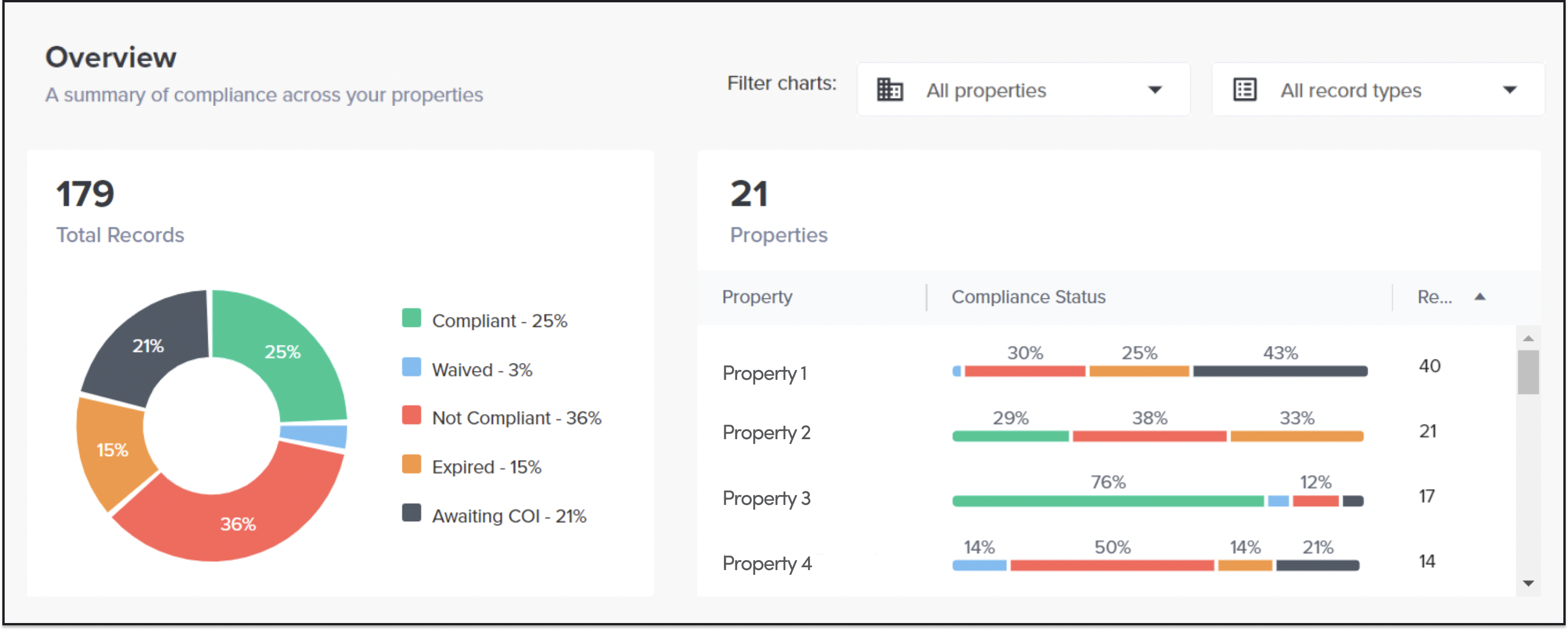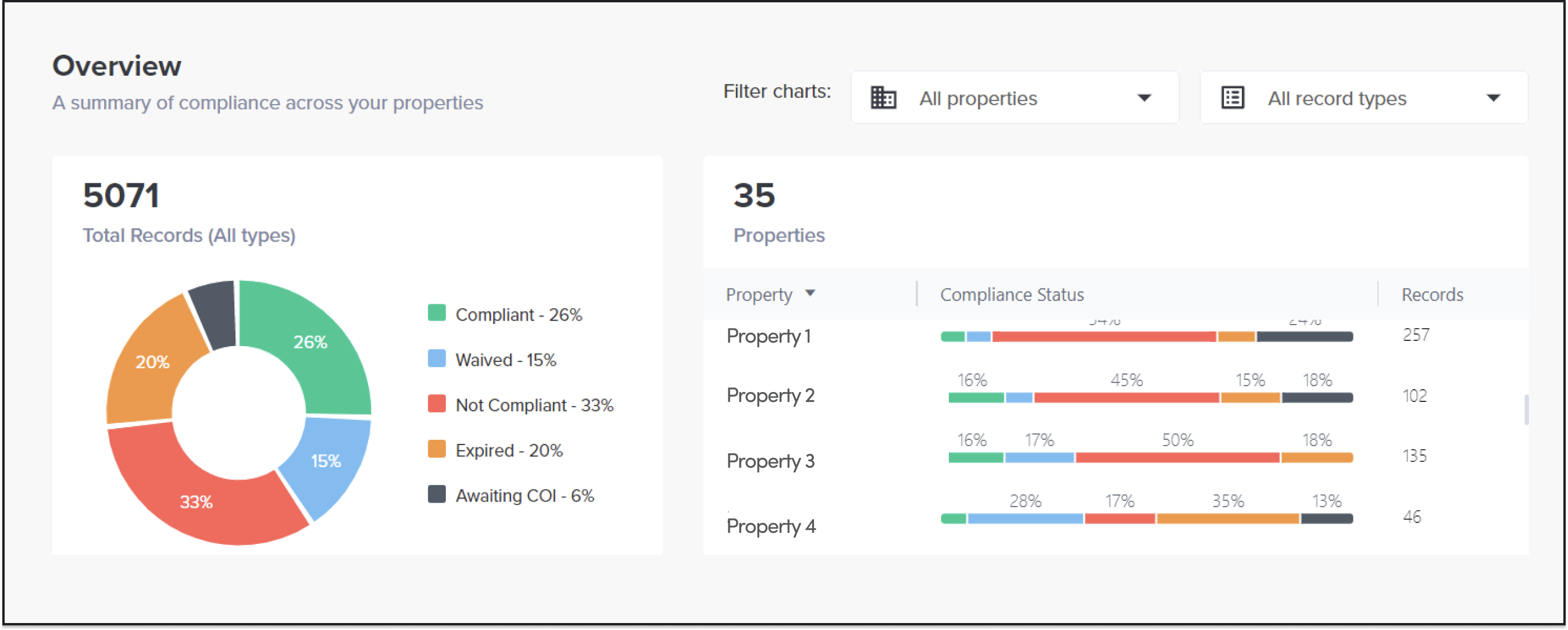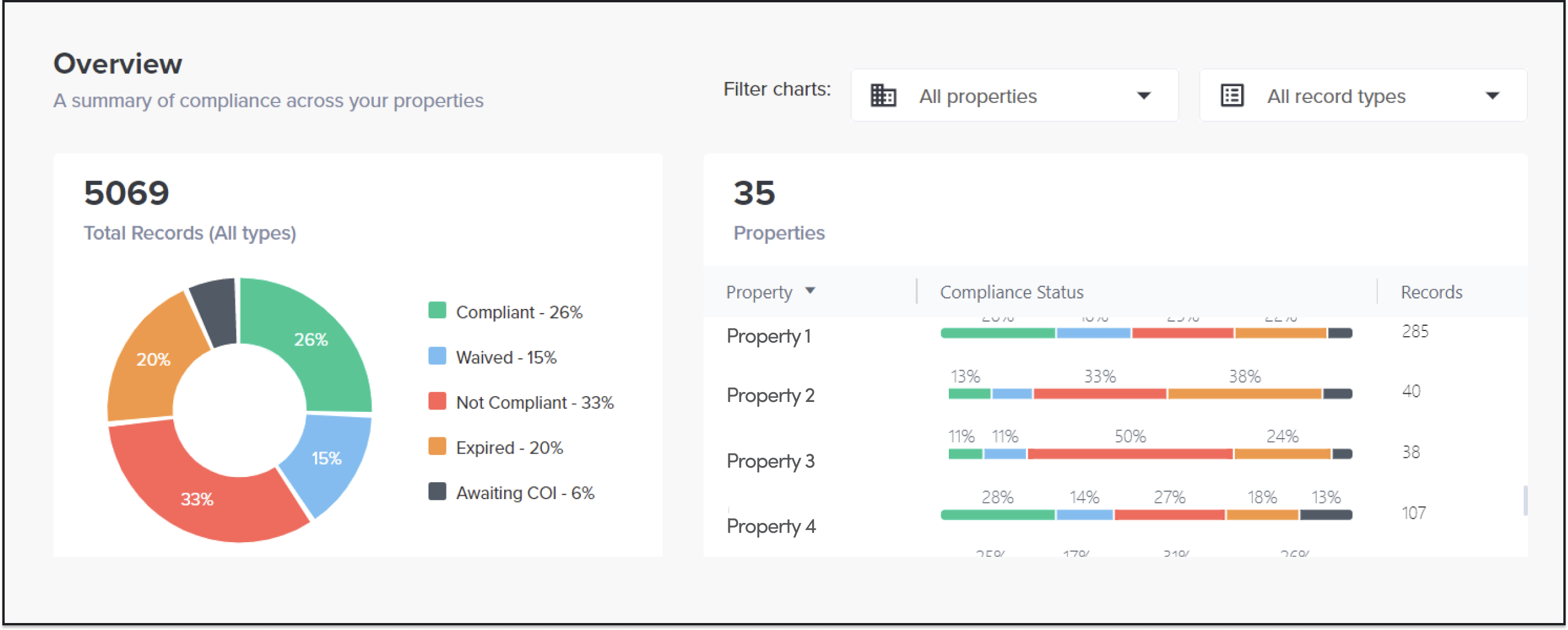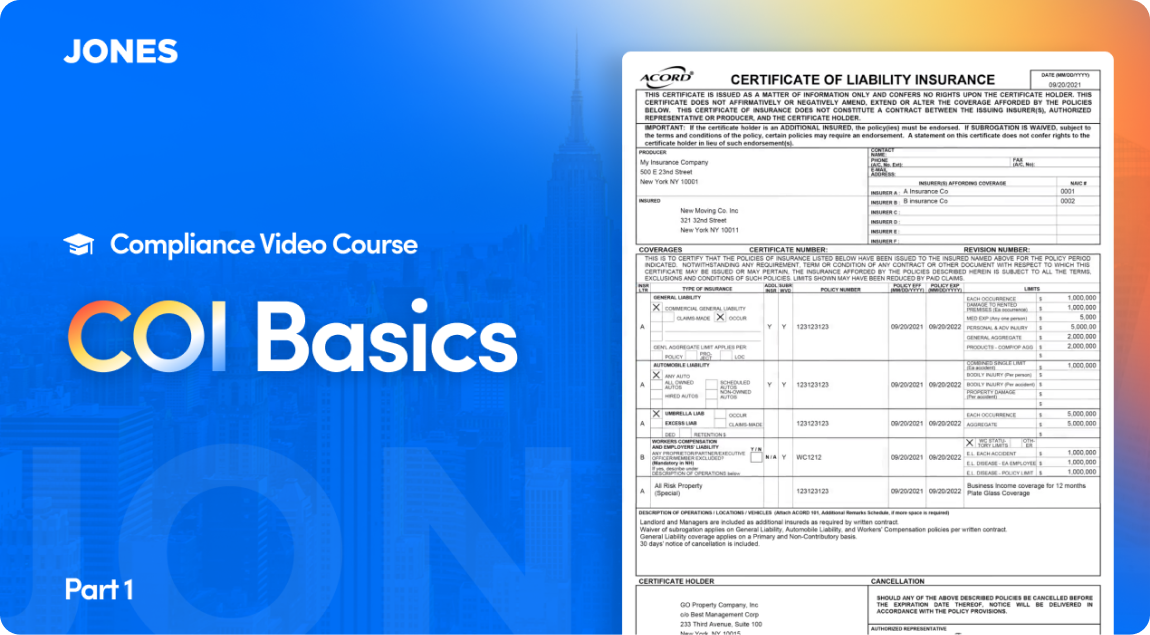How to get aggregate compliance data charts?
For Jones customers, things are easier – as of January 2022, compliance charts are available on every account dashboard. You can skip right to the next section.
If you don’t have Jones, additional steps will be required. Here is a guideline to create a basic compliance analysis using excel.
Step 1:
Compile your properties’ data in one place, add columns for property/project, Record Name (tenant or vendor), Record Type (Tenant/Vendor), Compliance Status, Expiration Date
Step 2:
Organize the compliance status for each of your properties in the “Compliance Status” column. Here are some categories you can use::
- Compliant (all requirements are satisfied)
- Non-compliant (at least one requirement is missing or insufficient)
- Awaiting COI (no insurance documents are on file)
- Waived (one or more gaps exist but they do not present a material risk)
- Expired (one or more policies have expired)
Step 3:
Create a Chart by highlighting your data and leveraging Excel’s native charts and graphs functionality. This will allow you to produce a bar or pie chart to visualize the information.
Here are some examples of stories your compliance data can tell.
1. Check for any outliers on properties or project

In this example, if you look at the compliance statuses data (pie chart to the left), the portfolio has a significant percentage of non-compliant records.
However, on a property basis, you will see that it’s the particular property, Property 4, has a disproportionate number of non-compliant records as compared to other properties.
💡 Action item:
Follow up with Property 4’s property manager to get their perspective on how the compliance process is working and not working. Have that manager connect with a peer that is seeing more success and ask them to take back some best practices/next steps. Set a target for the next Q and check back in to see what progress has been made.
Perhaps, the insurance requirements for this property are stricter than those for your other assets? If that’s the case, was this intentional, and would it make sense to revise any of these? Can any waivers be granted for specific vendors/requirements?
If revising insurance requirements is not an option, you might want to consider the following:
- Are you communicating with the right contact at the vendor/tenant? Can we connect directly with the broker? Maybe there is an opportunity to improve email communications or cadence
- Alternatively, you might look into bringing in new vendors whose insurance requirements will be more compatible with your requirements.
2. There is a high percentage of waived records across your portfolio

Here is an example.
The overall portfolio, according to the pie chart above, has 15 percent of waived records, which is rather high. But how evenly are these waived records spread across assets?
As you can see on the properties’ breakdown to the right, it is Property 4 that is that is responsible for the average being so high — in fact, ~28 percent of its records ended up waived.
Why is this happening?
You might want to take a deeper dive into this property’s performance and see if there is one particular policy that ends up being waived all the time, e.g. Professional Liability. It may also be the case that certain processes for granting waivers are not being followed.
💡 Action item:
Consider the rationale for these waivers, do they make sense from a risk management standpoint? If so, can those requirements be removed from future requests? Can this be applied to any other properties to eliminate non-compliance? Conversely, should these be revised or retracted if need be?
Answering these questions may help you to alleviate compliance burdens across other similar instances within your portfolio.
3. There is a high percentage of expired records across your portfolio

Three things could be at play here.
First scenario: your renewal dates crawl upon you as they all happen roughly at the same time (according to Jones data, ~25 percent of all COIs expire in January).
Second scenario: lots of expired records might indicate difficulties in the COI renewal process.
Third scenario: There are some vendors or tenants who no longer service/occupy the property. These records can be archived for the time being if a renewed Cert is no longer required.
💡 Action item:
Determine which scenario is true. Do your COIs expire at the same time and does it happen across your entire portfolio? If yes, you might want to implement a process that helps you manage COI renewals in advance.
Here is what the Jones team recommends:
- Pull a list of all your tenant and vendor records with insurance records expiring in January
- Draft a communication to the primary insurance contact at their company to notify them of which one of their policies is expiring (important as they may have specific brokers for specific policies) and instructions on how to submit a renewed COI
- Be sure to send follow-up communications over the course of the month to ensure you are collecting all outstanding policies as they begin to expire and are renewed.
If there is a higher percentage of expired COIs at one of your assets, or if your COIs expire at different months, then you might need to fix your COI management process.
Things to examine:
- Do you have a system in place to be notified of expiring COIs at least 1 month in advance?
- Are all your tenants and vendors responsive?
- How many emails does it take on average to receive a COI from your tenant or vendor?


